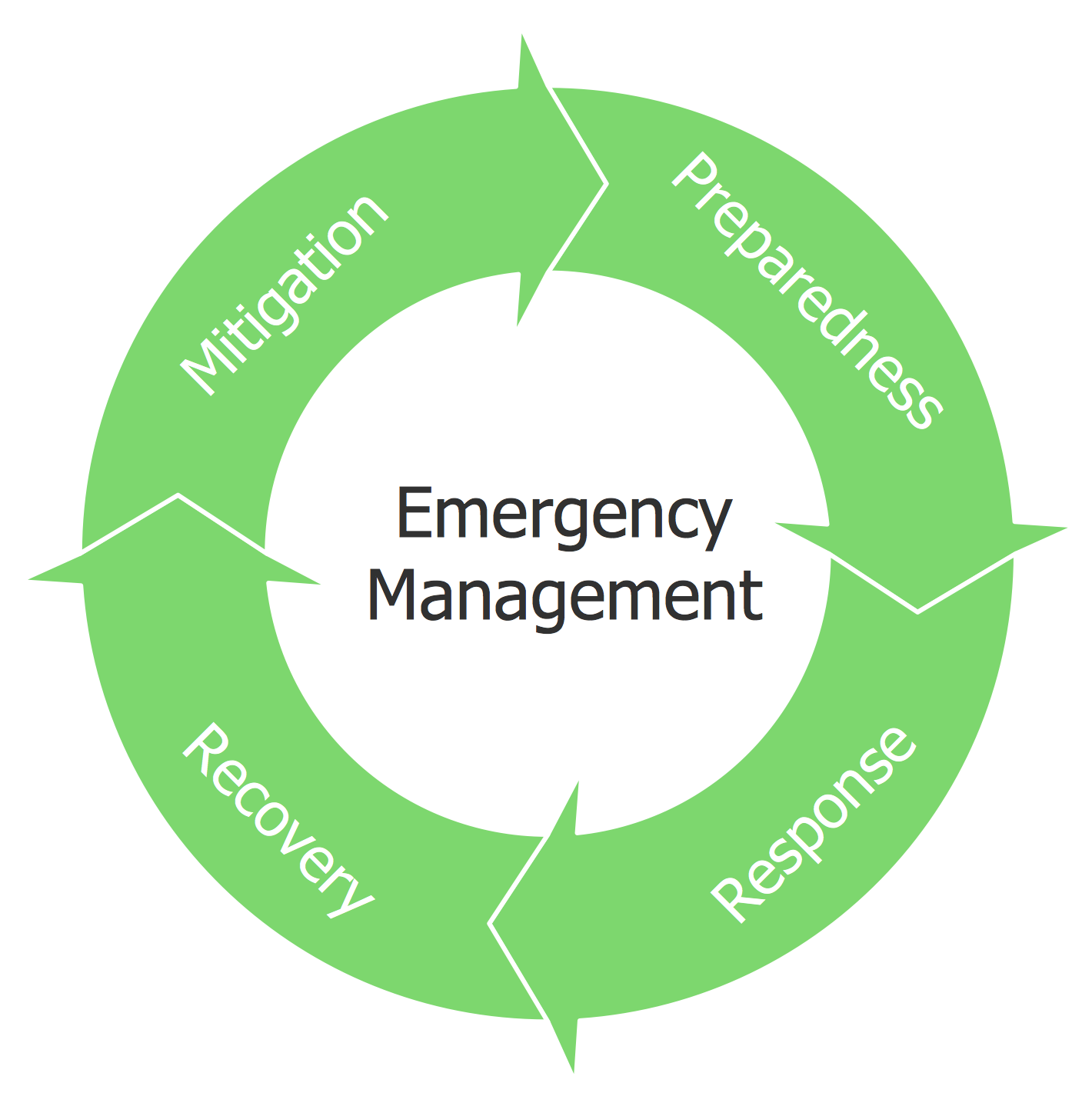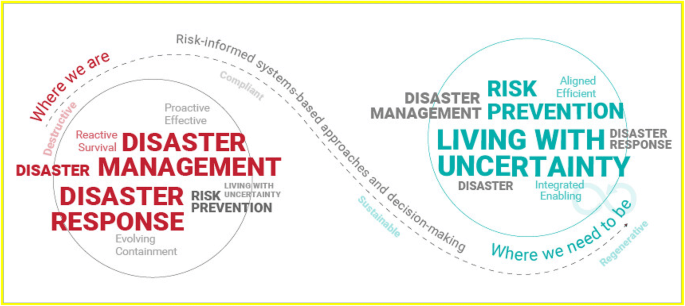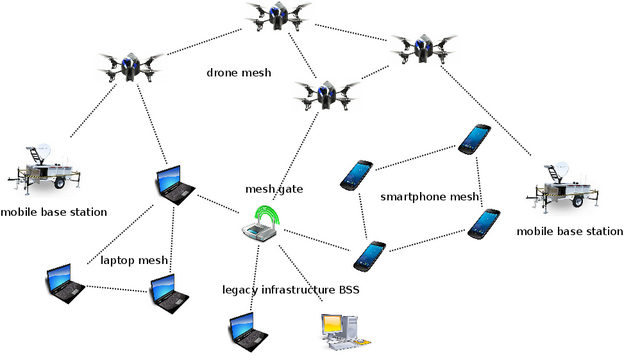
Disaster Management: Things You Need When Things Go South
A disaster is a significant disruption of a community’s or society’s functioning that has far-reaching human, material, economic, or ecological impacts that are beyond the afflicted community’s or society’s ability to manage using available resources. Disaster management relates to dealing with the human, material, economic, or environmental ramifications of a disaster. It also encloses preparing for, responding to, and learning from the effects of severe failures. Even if disasters are frequently caused by nature, they can have human origins.

Disaster occurs when a hazard affects those who are susceptible. The combination of risks, fragility and the inability to mitigate risk’s potential negative repercussions leads to calamity. Natural disasters and armed warfare have long been a part of human history, causing spikes in mortality and morbidity.
What exactly do you mean by Disaster Management?
Disasters, in any form, wreak havoc on communities and can have serious effects on people, property, businesses, and the environment. They frequently stress a community’s ability to manage. Disaster management is the practice of efficiently preparing for and responding to calamities. It entails deliberately allocating resources to reduce the damage caused by accidents. It also entails a systematic strategy for handling catastrophe prevention, readiness, response, and recovery duties.
Types of Disaster
Disasters occur in a variety of forms. They are categorised as –
Natural Disaster: Catastrophes caused by environmental factors

Natural disasters are naturally occurring physical phenomena produced by either rapid or slow onset events and have immediate effects on human health and secondary consequences that result in additional death and suffering. These disasters can be devastating, such as:
- Geophysical (e.g. Earthquakes, Landslides, Tsunami, Volcanic Activity and so on)
- Hydrological (e.g. Flash Floods and Avalanches)
- Climatological (e.g. Extreme Temperatures, Drought, Wildfires, etc.)
- Biological (e.g. Disease Epidemics, viruses, Insect/Animal Plagues, etc.)
- Meteorological (e.g. Cyclones and Thunderstorms)
Natural disasters are characterized according to their magnitude or severity, the rate at which they occur, the length of time they exist, and the region they affect; for example, earthquakes last only a few minutes and typically involve a small area, whereas droughts take a long time to develop and fade away and frequently affect large areas.
Man-made Disaster: Catastrophes as a result of human activities
Man-made disasters are events that are caused by humans that occur in or around human settlements, often as a result of natural or technical disasters. Industrial explosions and structural breakdowns caused by human negligence are some of the illustrations of human-induced disasters. Some of the more instances are:
- Environmental Degradation
- Pollution
- Accidents caused due to Industrial, Technological and Transport usually involve the production, use or transport of hazardous materials.
Emergencies In The Event of a Disaster

Intricate Emergency
Multiple hazards, or a complex combination of natural and human-made elements, such as a breakdown of authority, looting, and attacks on essential infrastructure, as well as confrontation and war, can result in disasters. These can include things like:
- Insecurity in the Food Supply
- Relocation of people
- Armed Warfare
- Epidemics
- Widespread Damage to both Societies and Economies
Pandemic Emergency
A pandemic is a contagious disease outbreak spread across a vast area, affecting human and animal populations and inflicting high economic and societal costs. It can refer to the emergence of a large number of instances of an infectious disease in a generally disease-free region or population or to an extraordinary or unexpected rise in the number of cases of a contagious disease that already exists in that region or population. Pandemics can occur as a result of natural or man-made disasters. The following outbreaks have been among them: Coronavirus Disease (COVID-19), Ebola, Zika, Avian Flu, etc.
Acknowledging the threats in Disaster Management
When it comes to disaster management, it’s critical to be aware of the dangers. Part of disaster management includes identifying and treating cause variables. It comprises determining a community’s calamity preparedness. Some regions of the country are in more danger than others. Analyzing loss exposure is also a context of disaster management. Homes built just above the sea level, in contrast, may be more vulnerable to flooding if a hurricane strikes.
What are the various aspects of Disaster Management?
The various aspects of Disaster management involve dealing with all humanitarian aspects of calamities, including preparedness, response, and recovery, with the goal of reducing disaster impact.
Some of the Prominent Emerging Technologies in the field of Disaster Management

Technology’s influence on disasters can be predicted in such a way that it lowers risk and aids in prevention and mitigation. Progress in natural hazards science and technology and related coping strategies have allowed for substantial improvements in the integrated approach to the problem of natural catastrophes in recent years.
Use of Technology
Technologies have the potential to transform disaster management, particularly if emerging technology can be adequately integrated with current infrastructure. Artificial Intelligence (AI), Big Data, the Internet of Things (IoT), and Blockchain will be able to dramatically improve India’s disaster response and relief capacities as they become more advanced. New disaster management breakthroughs are made when great ideas and cutting-edge technology come together.

Remote Sensing, Geographical Information Systems (GIS), Global Positioning Systems (GPS), Satellite Navigation Systems (SNS), Satellite Communication, Amateur and Community Radio, TV and Radio Broadcasting Telephone and fax services are available which would only help in smoothing the situation in case of any disaster. Technologies such as video conferencing, cellular phones, the Internet, e-mail, and networking; Information about disasters and databases for disaster management are available online.
Technology And Uses
Setting up a catastrophe early warning system and quick disaster processing and analysis are examples of how these technologies can be used in disaster management. When calamities strike, disaster mapping and scenario modelling are two of the first things that come to mind. Hazard monitoring and assessment; disaster trend forecasting; vulnerability assessment; emergency response – decision support; disaster response, mitigation, and relief planning Logistics for disaster relief planning Search and rescue teams.
Products or software used in disaster management at present includes the likes of drones. Drones have rapidly grown over the last decade, encompassing a wide range of areas ranging from agriculture to commerce, and are increasingly being employed in disaster management and humanitarian help. Unfortunately, there is still a lack of proof of its use in major disasters. With the goal of empowering and inspiring future work, this paper will analyze current drone feasibility projects and highlight a variety of problems linked to the deployment of drones in mass disasters.
The following technologies, in addition to drone technology, have been used in disaster management.
Big Data:
As a result of the growing digitalization and the increasing prevalence of smartphones among varied demographics, the amount of data collected has expanded at a rapid rate. It can give rise to profound insights when evaluated properly. As a result of this opportunity, Big Data analytics has grown in popularity.
Artificial Intelligence monitoring impending tragedies
Predictive analytics can use AI-based algorithms to help predict disasters and speed up recovery and response times. Water, as well as damaged buildings and roads, can be identified using AI-powered image recognition. It can also produce heat maps by combining various data streams. Chatbots or voice response systems driven by artificial intelligence can also assist in coping with large call volumes to emergency hotlines, resulting in more effective outcomes.
Internet Of Things

The establishment of a complex system known as the Internet of Things (IoT) has been fostered by cloud computing technologies combined with the internet. IoT-based sensors can help detect potentially dangerous events, such as earth movements and forest fires, by tracking carbon dioxide levels, moisture, and temperature. They can also be used to detect flooding by monitoring river levels.
Blockchain
Organizations typically face obstacles during relief operations, such as ensuring resources are used for the intended reasons due to a lack of confidence, openness, and measurability. Misinformation can often hinder efforts and put people at risk in these situations. By allowing for the speedy gathering and management of verifiable data, blockchain technology has the ability to ease these concerns.
You can automate routine decision-making in high-pressure crisis situations. Innovative contracting solutions can be applied by using the improved reliability of blockchain-encoded data. This can help rescuers make faster judgments and decrease stress.
Robotic Systems
Thanks to advances in computing technology, robots are now incredibly advanced and prepared to better support and complement live characters or rescue animals. They can be employed to rescue victims without compromising rescuers’ lives. These can be incredibly useful to NDRF units, especially in rugged terrain and life-threatening situations.
Types of Disaster Risk Reduction Technologies
In the disaster phases of prevention and preparedness, the application of technologies is more important and requires more creativity than in the disaster phases of reaction and recovery.
DBMS – the technology involving Database Management System

It is a computer-based system for storing, manipulating, and retrieving data. There are three types of data models used to store and retrieve (recover) data in every database management system: hierarchical, network, and relational models.
Disaster Information Software can be built with DBMS, and it also acts as the foundation for other systems like MIS, DSS, and GIS. It is suitable for establishing a Disaster Information Network. This would be critical in issuing a warning to everyone in a vulnerable area. The DIS can also provide data about disaster professionals in a specific country or region. It can be helpful in proper calamity fund accounting within a particular place.
Remote Sensing
Satellite imagery and internet of things (IoT) devices that broadcast data to a central cloud platform for analysis are two examples of technologies that enable such predictions. Remote Sensing is the study of gathering data about the Earth’s surface without physically touching it. This is accomplished via Sensing and recording reflected or emitted energy, as well as processing, evaluating, and applying that data, and it entails the seven aspects listed below:
- Energy Source or Illumination
- Atmospheric Radiation
- Target Interaction
- Recording of Energy by the Sensor
- Transmission, Reception, and Processing
- Interpretation and Analysis
- Application.
UAS or the Unmanned Aerial Systems
Aerial surveying provides a thorough perspective of the damage after natural catastrophes or man-made emergencies. Drone technology advancements enable disaster management firms and recovery teams to conduct more efficient rescue operations. Emerging drone companies are creating multi-functional unmanned aerial systems (UAS) to provide aerial support for a variety of applications.
Wireless Mesh Networks
Natural disasters frequently wreak havoc on power and communication infrastructure, particularly in developing countries. Utility operators must also restore connections and organize evacuation or search and rescue efforts, taking several hours.
Connected Command Center and Geographical Information System (GIS)

The critical information involving people’s movements and navigation of incident zones can be obtained more efficiently through location tracking. Disaster response command centres no longer need to be in close proximity to impacted areas because of drones and internet links. A Geographic Information System (GIS) is a computer-based system that combines hardware, software, data, people, and methodology to respond to geographical inquiries as needed.
The Global Positioning System (GPS) is a satellite-based navigation system that gives precise location data. It can help determine the level of danger in a particular area. GPS can be utilized for an emergency response to locate dangerous spots and find the shortest route for responders using network analysis. It is used to manage damage information and site evaluations for reconstruction and forecast and simulate disasters based on dangers in specific places.
*Some of the technological Assistance and online tools in disaster relief.
Technology has been used to expedite disaster relief efforts in recent years. Survivor identification and data communication has been a key role played by drones and robots to rescue crews. Humanitarian aid has also been dropped from them.
ALIRT (Airborne Ladar Imaging Research Testbed) is a device that can depict topography and infrastructure in high-resolution 3D. The system may be used to detect population shifts in displaced person camps, helicopter landing zones, and road transport conditions, among other things. This data can assist relief organizations in efficiently distributing critical resources such as tents, blankets, water, food, and medical supplies.
Another creative technology that can aid disaster relief efforts is Google People Finder. It’s an open-source web application translated into more than 40 languages. The software allows users to submit and search for information about persons a tragedy has touched.
Wrapping up
The significance of scientific technologies can be comprehended through the paras mentioned above. Although earthquake prediction is still impossible, there are several methods available today to make accurate forecasts and warnings of various imminent hazards. These new technologies have enormous potential for assisting in developing advanced catastrophe management systems. There can be no world free of natural disasters without science and technology and its integration with other fields. We already know a lot about natural disasters and how to avoid or mitigate many of their consequences owing to science and technology.
